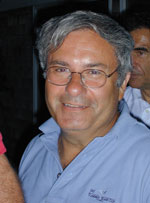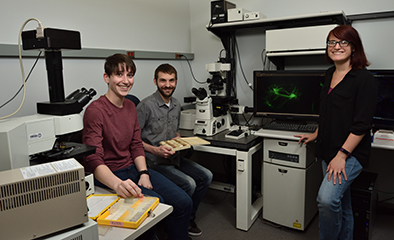CBMP Faculty
Guy Salama, Ph.D.

Department: Cardiology
Email: gsalama@pitt.edu
PubMed: Link
Dept / Lab Webpage: http://www.dept-med.pitt.edu/card/faculty_info.aspx/Salama6033
CBMP groups: Cell Communication, Signaling and Ion Channel Biology
Research Interests
A central goal of Dr. Salama's laboratory is to elucidate the mechanisms responsible for the initiation and termination of cardiac arrhythmias. An important step towards that end is to better understand the electrophysiology and function of the normal mammalian heart. To achieve these goals, they have developed the use of voltage-sensitive dyes and high temporal and spatial resolution optical techniques to map patterns of action potential (AP) propagation and repolarization. These novel methods are used to elucidate of the mechanisms that generate spatial heterogeneities of AP durations and the interplay between dispersion of repolarization (DOR) and anisotropic conduction velocities (CV). Several parameters play a role in producing non-uniformities of repolarization: the anisotropy of fiber structure is now found to influence DOR as well as CV and spatial heterogeneities of ionic channel expression and of AP duration restitution following a change in heart rate. Another related issue is to map AP propagation transmurally from endocardium to epicardium to elucidate the role of M-cells as (midwall cells) which may provide reentry pathways by forming a barrier of abrupt DOR. Animal models for cardiac arrhythmias include: acute ischemia in the guinea pig heart and 2 rabbit models of the long QT syndrome (LQTS). A number of mechanisms are being investigated as factors that promote arrhythmias in the LQTS: elevation of extracellular K+, sympathetic stimulation, and the role of spontaneous Ca2+ oscillation from the sarcoplasmic reticulum. Mapping spatial heterogeneities of intracellular Ca2+ transients in mammalian hearts using Ca2+ indicator dyes and imaging techniques. Once the normal heterogeneities of Ca2+ are determined, changes in Ca2+ transients will be analyzed in a wide range of physiological conditions to determined parameter that modulate Ca2+ transients. This laboratory has been at the forefront of the investigation of the role of sulfhydryl oxidation-reduction as a mechanisms to regulate Ca2+ release from the sarcoplasmic reticulum (SR). They are continuing this line of work in very exciting direction. 1) We have found that nitric oxide (NO) and NO donors nitrosylate regulatory thiols on the SR Ca2+ release channel (e.g., ryanodine receptor) resulting in channel opening and release of Ca2+ from the SR. This mechanism seems to play a key role in Ca2+ homeostasis in striated muscles. 2) We recently found that the actions of NO can be reversed by thioredoxin, thioredoxin reductase, a thiol redox regulatory mechanism in mammalian cells which is linked to NAPDH metabolism.
